PenHero 365: Waterman Man 100 Black
by Jim Mamoulides, January 13, 2010
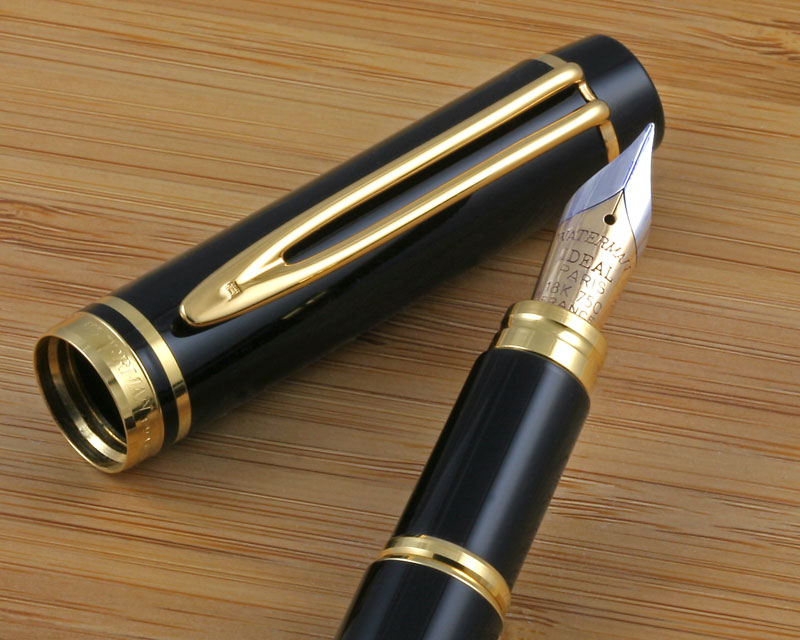
Waterman Man 100 fountain pen cap and nib detail
I picked up this Waterman Man 100 so I would have the basic black version of the pen for an article I want to do on the Man 100 Harlequin and Opera pens. I actually don't remember if I traded for it, bought it or exactly how it came into my collection. I do know that it came by itself, with no box and papers, and no converter.
The Man 100 was introduced in 1983 as the flagship of the Waterman line and commemorates the 100th anniversary of the company. It's is a blend of retro and contemporary pen design, capturing the cylindrical look of early black hard rubber pens from the 1910s through the 1920s. Some references to this pen call it the "Le Man 100", which is what Waterman calls the line in its French language product launch write up, however in the company's English language "Waterman Brand History," published in March, 1998, the line is called, "Man 100." So both names apply, depending on what language you are speaking at the moment!
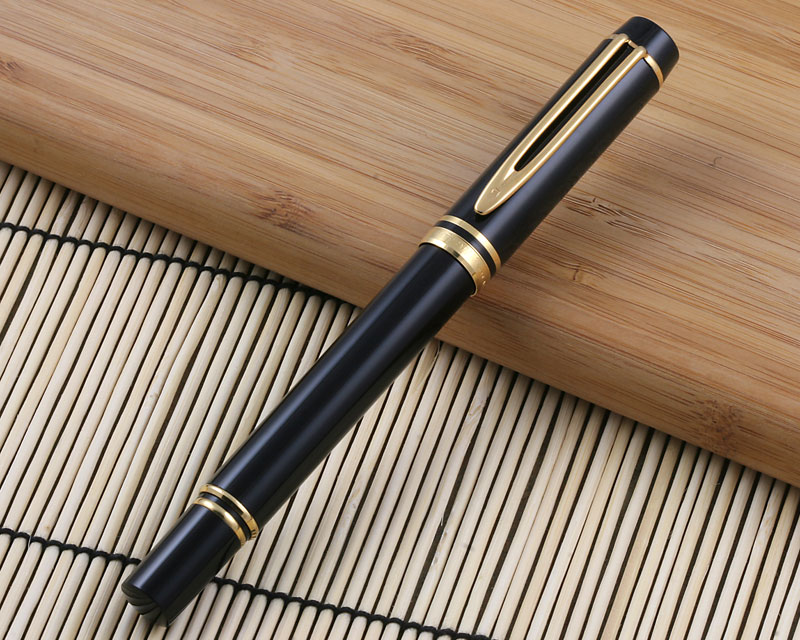
Waterman Man 100 fountain pen closed
The Man 100 Harlequin and Opera models, with their chased cap and barrel, strongly recall the early chased hard rubber pens. In a nod to modern Waterman heritage, the clip is a longer version of the signature open V shaped clip introduced on the Waterman C/F in 1953. Unlike early Waterman pens which had a patented clip that was riveted to the face of the cap, the Man 100 clip is a washer type, held in position by a screw through the cap top, giving the pen a more modern look. A retro clip such as the riveted one would look out of place on a contemporary pen in much the same way as the original Waterman boxed lever unit. Waterman committed to cartridges in the 1950s, and a lever fill pen would be unlikely. Most interestingly, this clip design is more like the washer clip design used on early Parker pens, such as the 1920s Duofold.
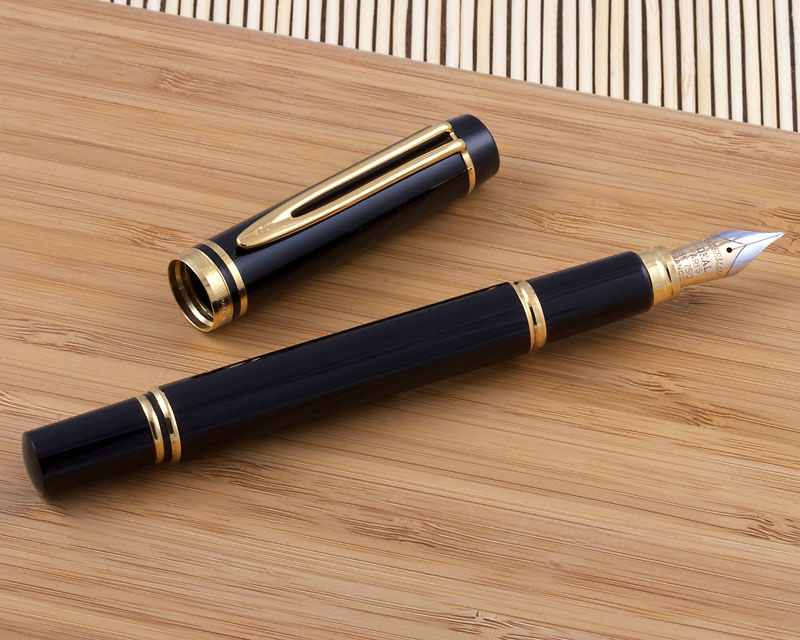
Waterman Man 100 fountain pen open
The Man 100 had a very long production run, from 1983 through 1999, and the line included many variants, from the formal black model shown here, to marbled colors, to several exotic wood pens, to precious metals, such as sterling silver and solid gold, giving the Man 100 a wide range for collectors. In 1985, Waterman introduced a slimmer version of the pen called Man 200.
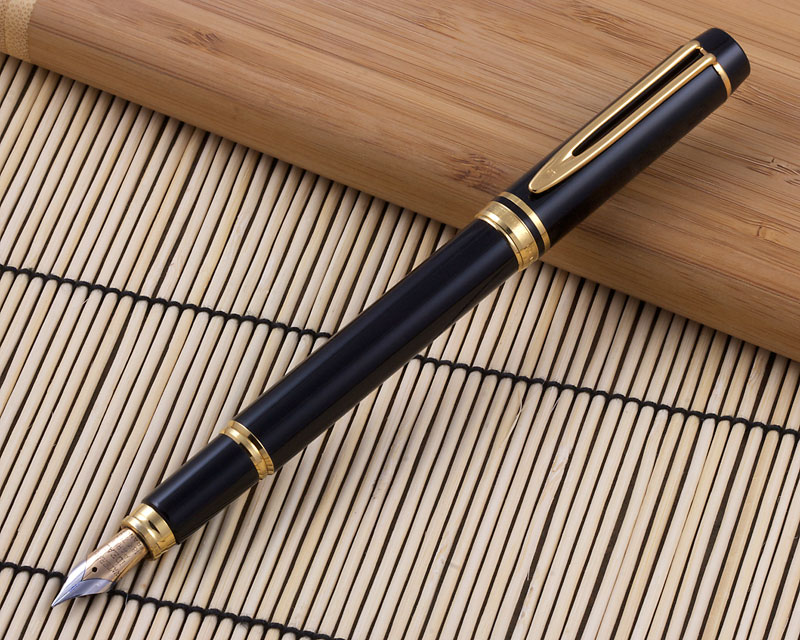
Waterman Man 100 fountain pen with the cap posted
This Waterman Man 100 is a moderately heavy and large pen, as befitting a flagship model, weighing 1.6 ounces and being 5 5/8 inches long with the cap on and 6 11/16 inches with the cap securely snapped onto the end of the barrel. It's a classic modern cartridge / converter pen, and I prefer bottled ink in it, and generally use Waterman Florida Blue in my Waterman pens. Because the pen is so darn long when posted, I usually leave the cap off when I write with it.
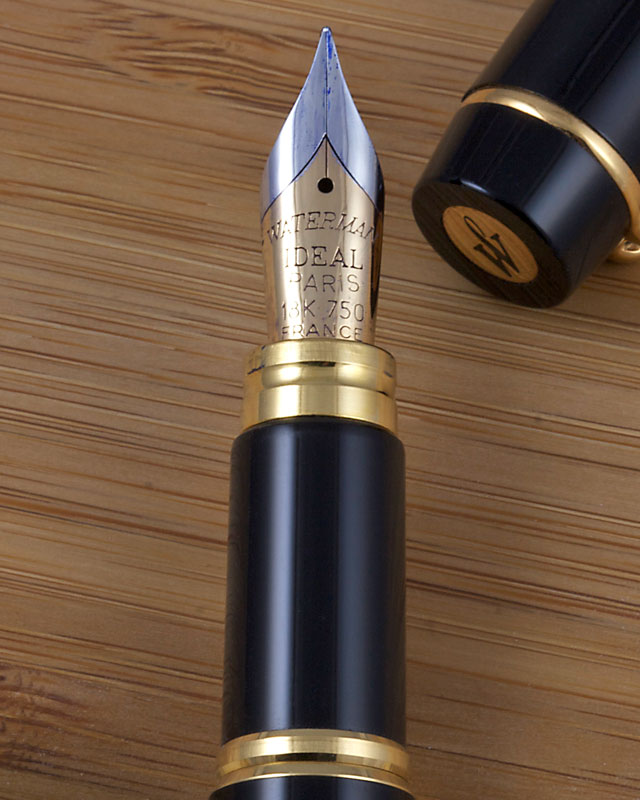
Waterman Man 100 fountain pen nib and cap top detail
This Man 100 has a truly superb nib, typical for these pens. My pen has a large, two tone platinum masked 18 karat gold fine nib that writes a perfect, smooth line, and by pressing just a little, the nib writes a smooth varied width line. It's not a true flexible nib, as such nibs need almost no effort to write expressively, and are also quite fragile, but it does add a lot of creative potential to an already nice writer. The nib face, as with early Waterman pens, has "Ideal" stamped on the face, adding another retro touch.
A large collection of Man 100 pens would be a high dollar endeavor, as this was the top of the Waterman line for many years and includes several precious metal and difficult to find and highly sought after exotic wood models. Just owning one is nice enough, as these are really exceptionally nice pens and great writers.
Discuss / Recommend what you read on PenHero.com
Follow us on Twitter: PenHero
Add a link to PenHero.com on your blog:
(Copy & paste code)
Please only use the photo provided. Use of other photos requires permission.
The provided link photo will change as we update the site.
Comments on this article may be sent
to the author, Jim Mamoulides
PenHero.com Bibliography
